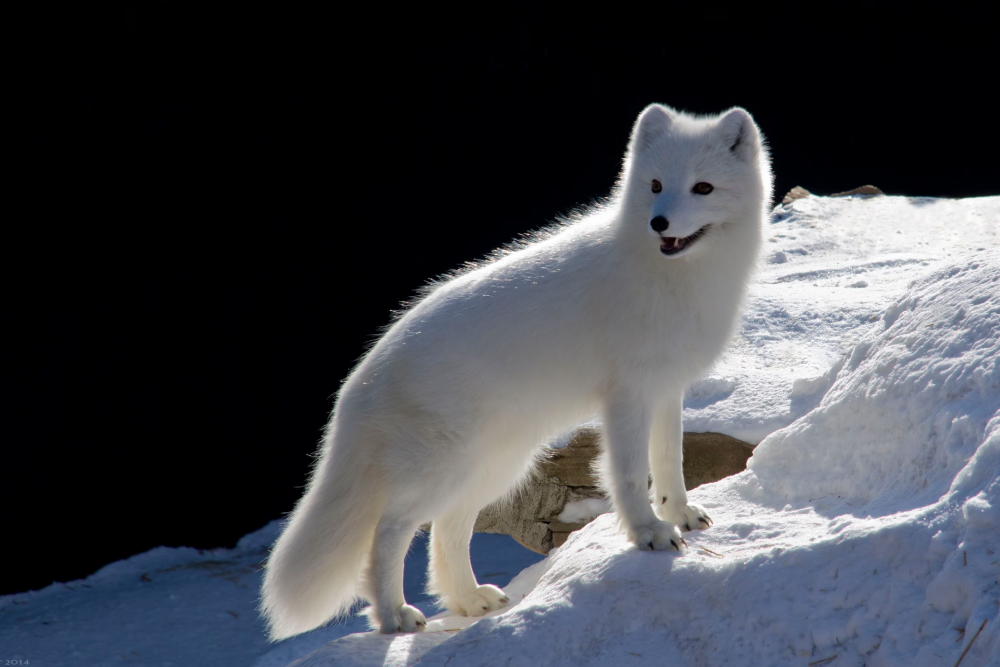The Arctic fox (Vulpes lagopus), also known as the white fox, polar fox, or snow fox, is a small, enigmatic mammal perfectly adapted to the harsh, frigid environments of the Arctic tundra. Its striking seasonal camouflage, keen hunting abilities, and remarkable survival strategies make it a fascinating subject for biologists and nature enthusiasts alike. This article delves into the Arctic fox’s biology, behavior, habitat, and the challenges it faces in the rapidly changing Arctic ecosystem.
Physical Characteristics
Arctic foxes are small, with adults weighing between 3 and 8 kilograms (6.6 to 17.6 pounds) and measuring about 75 to 115 centimeters (29.5 to 45.3 inches) in length, including their bushy tails. They are popular for their dense, multi-layered fur, which provides excellent insulation against the severe cold. This fur changes color with the seasons—white during the winter to blend in with the snow and brown or grey in the summer to match the tundra landscape.
Their compact bodies, short legs, and rounded ears minimize heat loss, and their fur-covered paws, or “muffles,” allow them to walk on snow and ice without slipping. These adaptations are crucial for their survival in temperatures that can plunge below -50 degrees Celsius (-58 degrees Fahrenheit).

Habitat and Distribution
Arctic foxes inhabit the circumpolar Arctic, including regions in North America, Europe, and Asia. They are found in coastal areas, tundra, and even on sea ice, where they follow polar bears and scavenge on leftover prey. Their range extends to the edges of the boreal forest, but they are primarily associated with treeless, open landscapes.
These foxes are solitary animals, although they may form monogamous pairs during the breeding season. They are highly territorial, with each fox or pair maintaining a home range that can vary in size depending on food availability and population density.
Diet and Hunting
Arctic foxes are omnivores with a diet that varies seasonally. During the summer, they prey on small mammals like lemmings and voles, which can make up the bulk of their diet when these rodents are abundant. They also eat birds, bird eggs, insects, berries, and seaweed. In winter, when food is scarce, Arctic foxes rely heavily on scavenging, often following polar bears to feed on the remains of seals and other marine animals.
Their keen sense of hearing allows them to detect prey beneath the snow. They employ a hunting technique known as “mousing,” where they leap into the air and pounce to break through the snow and catch their quarry.
Reproduction and Lifespan
The breeding season for Arctic foxes begins in April or May. After a gestation period of about 52 days, the female gives birth to a litter of 5 to 10 kits, although litters can be as large as 20 in areas with abundant food. The kits are born blind and helpless, but they grow rapidly, weaning off their mother’s milk within a month and learning to hunt by the time they are 3 months old.
Both parents participate in raising the young, with the male providing food while the female stays with the kits. Family groups disband in the autumn, and young foxes disperse to find their own territories.
In the wild, Arctic foxes typically live for 3 to 6 years, although they can live up to 10 years in captivity.
Adaptations to Extreme Conditions
The Arctic fox’s survival in one of the planet’s most extreme environments is due to a suite of remarkable adaptations:
Insulation: Their dense fur and fat layer provide exceptional insulation, protecting them from freezing temperatures.
Camouflage: Seasonal fur color changes help them avoid predators and sneak up on prey.
Metabolism: They have a low basal metabolic rate in winter, reducing their energy requirements.
Food Caching: Arctic foxes store surplus food during times of plenty, hiding it in caches to eat during leaner periods.
Locomotion: Their paws are adapted for traveling across snow and ice, with fur-covered pads and sharp claws for traction.
Threats and Conservation
Despite their adaptability, Arctic foxes face several threats. Climate change poses the most significant risk, as warming temperatures reduce the extent of sea ice and alter the tundra ecosystem. This can lead to shifts in prey availability and increased competition with red foxes, which are expanding their range northward as the Arctic warms.
Human activities, such as oil and gas exploration, also threaten Arctic fox habitats. Pollution, particularly oil spills, can have devastating effects on their environment and food sources.
Conservation efforts are underway to protect Arctic fox populations. These include monitoring population trends, protecting critical habitats, and mitigating the impacts of climate change. In some regions, programs to control red fox populations are also being considered.
The Arctic fox is a resilient and adaptable species, perfectly suited to the harsh realities of life in the Arctic. Its survival strategies, from its dense fur and seasonal camouflage to its keen hunting skills and food caching behavior, highlight the incredible ways in which life can adapt to extreme environments. However, the challenges posed by climate change and human activities underscore the need for ongoing conservation efforts to ensure the future of this iconic Arctic inhabitant.









